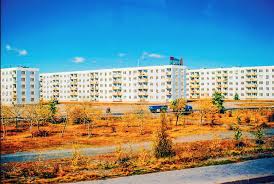Ulaanbaatar: A Blend of Tradition and Modernity

Introduction
Ulaanbaatar, the capital city of Mongolia, is a dynamic hub that reflects the country’s rich cultural history while rapidly evolving into a modern urban landscape. With a population exceeding 1.4 million, Ulaanbaatar is not only the political and cultural centre of Mongolia but also the economic heartbeat of the nation. Its significance is underscored by its unique position where traditional nomadic heritage meets contemporary development.
The Growing City
Over recent decades, Ulaanbaatar has undergone monumental changes. Once mainly a city of ger districts where traditional felt tents dominate, significant urban development has seen the rise of modern apartment complexes, shopping malls, and service industries. According to recent statistics from the National Statistical Office of Mongolia, nearly 60% of the country’s population now resides in Ulaanbaatar, demonstrating a noteworthy rural-to-urban migration trend.
Challenges Faced
Despite its growth, Ulaanbaatar grapples with several challenges, primarily air pollution and traffic congestion. Reports indicate that the city often has some of the most polluted air in the world during winter months, attributed to coal-fired heating systems in ger districts. The Mongolian government, alongside international partners, has initiated various projects aimed at improving air quality and sustainable urban development.
Cultural Significance
Ulaanbaatar remains steeped in cultural significance, with numerous museums, galleries, and theatres that showcase Mongolian history and art. The National Museum of Mongolia and the Zanabazar Museum of Fine Arts are central attractions for both locals and tourists. Events such as the Naadam Festival, celebrated every July, highlights Mongolia’s rich cultural traditions through wrestling, horse racing, and archery.
Conclusion
As Ulaanbaatar continues to develop, it represents a microcosm of Mongolia’s journey towards modernity while striving to preserve its rich cultural heritage. The city’s evolution will likely attract more investments and international attention, making it a key city in Central Asia. With ongoing efforts to tackle its challenges, Ulaanbaatar stands poised at a transformative crossroads, where the past harmoniously blends with the future, offering residents and visitors alike a unique experience that embodies both tradition and innovation.
